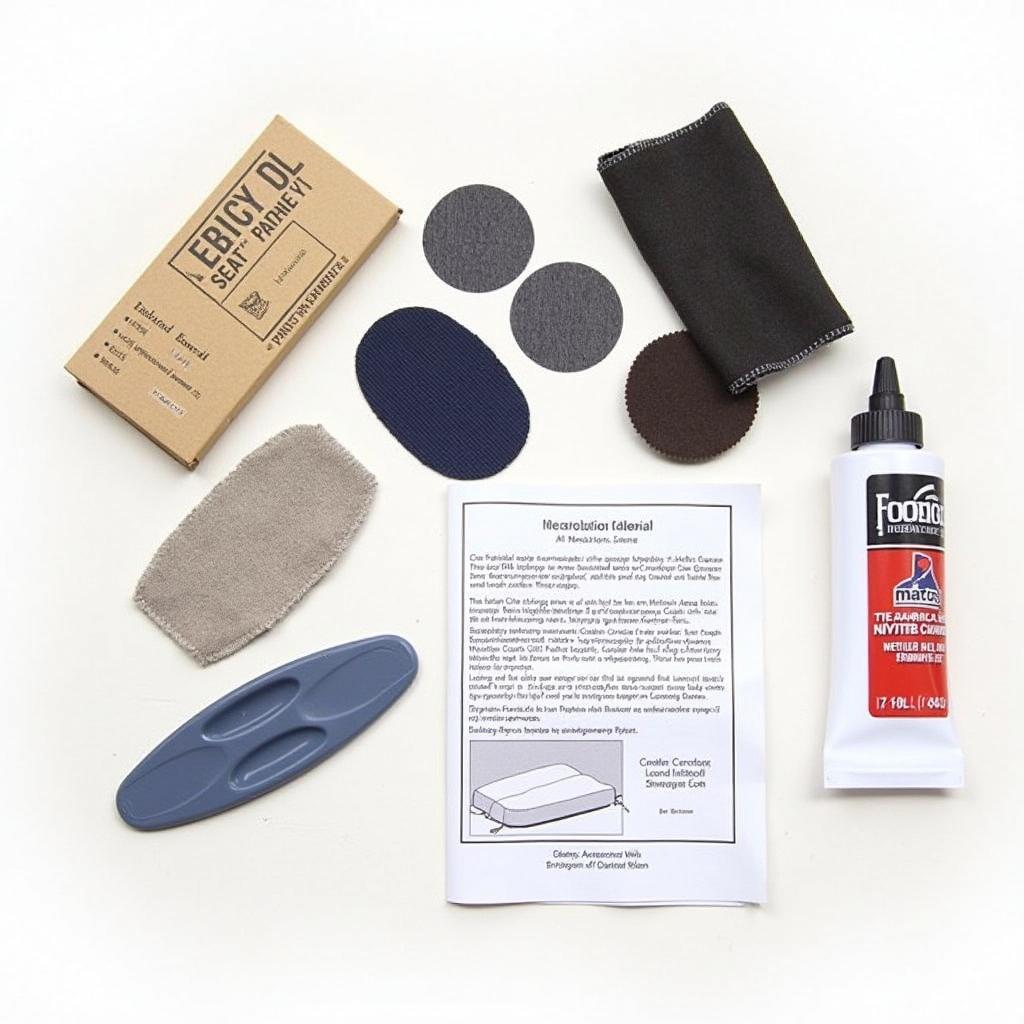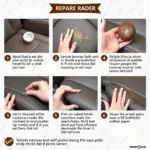A torn car seat can be an eyesore and may even decrease the value of your vehicle. Fortunately, you don’t have to live with this damage or pay for a costly replacement. Knowing how to repair torn fabric car seats allows you to perform DIY fixes that can restore the look and feel of your car’s interior.
Assessing the Damage: What Kind of Repair Does Your Seat Need?
Before you begin, it’s important to assess the severity of the damage.
- Small rips or tears: These can often be repaired using fabric glue or a patch.
- Larger tears or holes: These might need a patch and more advanced techniques to ensure a strong and durable repair.
- Burns or severe damage: These often require professional attention and may involve replacing a section of the upholstery.
DIY Repair Methods for Torn Fabric Car Seats
For small tears and rips, you can often repair the damage yourself using these methods:
1. Using Fabric Glue
- Clean the area: Thoroughly clean the area around the tear with a fabric cleaner and allow it to dry completely.
- Apply fabric glue: Apply a thin layer of fabric glue to the edges of the tear.
- Press and hold: Press the edges of the tear together firmly and hold for the amount of time specified in the glue instructions. You can use a heavy object to apply pressure while the glue dries.
2. Patching the Tear
- Choose a matching patch: Select a fabric patch that closely matches the color and texture of your car’s upholstery.
- Cut and apply the patch: Cut the patch to a size slightly larger than the tear. If necessary, you can use a piece of similar fabric from an inconspicuous area of the seat (like the underside) as your patch.
- Apply adhesive: Apply fabric glue or adhesive to the back of the patch.
- Position and press: Carefully position the patch over the tear and press down firmly. Apply even pressure for the amount of time recommended on the adhesive’s instructions.
When to Seek Professional Car Seat Repair
While DIY solutions can be effective for minor damage, there are instances where seeking professional help is necessary:
- Extensive Damage: If the tear is very large, affects multiple parts of the seat, or if the damage includes the seat’s structural components, a professional can provide a more reliable repair.
- Airbag Concerns: Never attempt to repair any part of the seat that houses an airbag. Tampering with these components can be dangerous and could affect the airbag’s deployment in an accident.
- Lack of Experience: If you’re not comfortable working with fabrics or unsure about your ability to achieve a satisfactory repair, a professional upholsterer can help.
You can find car seat repair services at various locations:
- Car Upholstery Shops: These businesses specialize in repairing and replacing car interiors, including seats.
- Auto Detailing Shops: Some auto detailing shops also offer car upholstery repair services.
- Mechanics: While not all mechanics provide this service, some might be able to recommend a trusted upholstery specialist.
For those in Seattle looking for reputable car audio and electronic repairs, car audio repair seattle offers expert services.
Preventing Future Car Seat Tears
There are steps you can take to prevent future tears in your car seats:
- Regular Cleaning: Frequently vacuum and clean your car seats to remove dirt and debris that can cause wear and tear.
- Seat Covers: Consider using seat covers to protect your car’s original upholstery from spills, stains, and everyday use.
- Careful Entry and Exit: Be mindful of how you get in and out of your car to avoid putting unnecessary stress on the seams of your seats.
Conclusion
Knowing how to repair a torn fabric car seat can save you money and help maintain the look of your vehicle’s interior. While DIY solutions work for minor damage, don’t hesitate to contact a professional for significant tears or when in doubt. Remember, a well-maintained car interior adds to the overall value and enjoyment of your vehicle.
FAQs
1. Can I use superglue to repair a torn car seat?
While superglue might seem like a quick fix, it’s not recommended for car seat repair. Superglue can dry stiff, making the repaired area prone to cracking or breaking. It’s best to use a flexible fabric glue designed for upholstery repairs.
2. How long does it take for fabric glue to dry on a car seat?
Drying times vary depending on the specific fabric glue used. However, most fabric glues will require at least 24 hours to cure completely. It’s essential to allow ample drying time to ensure a strong and lasting bond.
3. Can I repair a tear in leather car seats?
Repairing leather car seats is more complex than repairing fabric seats and often requires specialized leather repair kits and techniques. You might want to consult a professional for leather car seat repairs.
4. How much does it cost to get a car seat professionally repaired?
The cost of professional car seat repair can vary significantly depending on the severity of the damage, the type of material, and the location of the repair shop. It’s best to contact local upholstery shops or car repair businesses to get quotes.
5. Does car insurance cover torn car seat repairs?
Generally, car insurance policies don’t cover wear and tear, which includes torn car seats. However, if the damage was caused by a covered incident, such as a collision, you might be able to file a claim. It’s always best to check with your insurance provider to understand your coverage.
Need More Help With Your Car Seats?
We’re here to help! Check out these articles for more information:
For personalized assistance, contact our team of experts through WhatsApp: +1(641)206-8880 or Email: [email protected]. We’re available 24/7 to answer your car repair questions.



